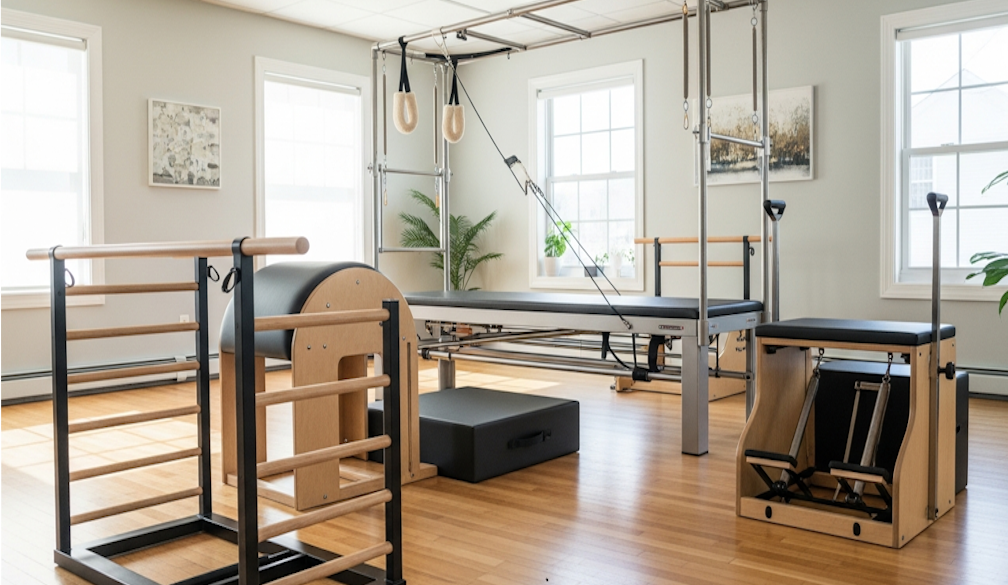Navigating Disability Services in Perth: Your Questions Answered

Understanding the landscape of disability support can feel overwhelming, especially when you're just starting out. If you’re looking for support and guidance, knowing where to turn is the first step. This guide aims to demystify the process of accessing essential disability services available in Perth, offering clarity and direction for individuals and families alike. We'll explore the key aspects of navigating these services, answering your frequently asked questions and providing valuable resources to help you make informed decisions.
Whether you're seeking assistance with daily living, therapeutic interventions, or community engagement, finding the right support is crucial. St Jude's offers comprehensive options for disability services around Perth designed to meet diverse needs and empower individuals to live fulfilling lives. We're committed to providing person-centred care that promotes independence, inclusion, and well-being. Read on to discover how to navigate the system and access the support you deserve.
Understanding the NDIS in Perth
The National Disability Insurance Scheme (NDIS) is the primary means by which Australians with disabilities access funding and support. But what does it actually mean for someone living in Perth? Simply put, the NDIS provides eligible individuals with a personalised plan that outlines their goals and the support they need to achieve them. This plan is then funded, allowing participants to choose the services and providers that best suit their unique circumstances. It's about empowerment and control, giving individuals the autonomy to shape their own lives.
Eligibility for NDIS Funding
To be eligible for NDIS funding in Perth, you must meet certain criteria. Generally, this includes having a permanent and significant disability that affects your ability to participate in everyday activities. You also need to be an Australian citizen or permanent resident and live in an area where the NDIS is available. The assessment process involves providing evidence of your disability and its impact on your life. Don't be discouraged if the process seems daunting; there are resources available to help you navigate the application and assessment stages.
Navigating the NDIS Application Process
Applying for NDIS funding can feel like a maze, but breaking it down into manageable steps can make it less overwhelming. Start by gathering all relevant documentation, including medical reports, therapy assessments, and any other evidence that supports your claim. Consider seeking assistance from a support coordinator or advocacy organisation who can guide you through the process and help you present your case effectively. Remember, persistence is key. If your initial application is unsuccessful, you have the right to appeal the decision. There are many support networks that can provide assistance in accessing suitable Perth disability services.
Types of Disability Services Available
Perth boasts a wide array of disability services catering to diverse needs and preferences. From in-home support to community-based programs, there's something for everyone. Understanding the different types of services available can help you make informed choices about what's right for you or your loved one.
In-Home Support
In-home support services provide assistance with daily living tasks in the comfort of your own home. This can include personal care, meal preparation, medication management, and household chores. For many individuals, maintaining independence and remaining in their own home is a top priority, and in-home support can make this possible. Imagine being able to continue living in your familiar surroundings while receiving the assistance you need to manage your disability. It's about maintaining dignity and control over your life.
Therapeutic Services
Therapeutic services play a crucial role in helping individuals with disabilities achieve their goals and improve their overall well-being. These services can include physiotherapy, occupational therapy, speech therapy, and psychology. Each discipline focuses on different aspects of functioning, such as mobility, fine motor skills, communication, and emotional well-being. Think of therapy as an investment in your future, empowering you to overcome challenges and live a more fulfilling life. The goal is to find the best disability service options in the Perth area.
Community Participation Programs
Community participation programs offer opportunities for individuals with disabilities to engage in social, recreational, and educational activities within their local community. These programs can range from art classes and sports clubs to volunteer work and supported employment. Participating in community activities can combat social isolation, promote inclusion, and enhance your sense of belonging. It's about connecting with others, building friendships, and discovering new interests.
Choosing the Right Disability Service Provider
Selecting the right disability service provider is a crucial decision that can significantly impact your quality of life. With so many options available, it's important to do your research and find a provider that aligns with your values, goals, and preferences. Consider factors such as experience, qualifications, service range, and reputation. Don't be afraid to ask questions and seek clarification on any aspects of their service delivery.
Key Considerations When Choosing a Provider
When evaluating potential disability service providers, there are several key considerations to keep in mind. Firstly, assess their experience and qualifications. Do they have a proven track record of providing high-quality care? Are their staff adequately trained and qualified? Secondly, consider their service range. Do they offer the specific services you need, or will you need to engage multiple providers? Thirdly, check their reputation. What do other clients say about their experiences with the provider? Online reviews and testimonials can provide valuable insights. Choosing between the many Perth disability service providers requires careful consideration.
The Importance of Person-Centred Care
Person-centred care is a philosophy that puts the individual at the heart of the service delivery process. It recognises that each person is unique and has their own individual needs, goals, and preferences. A person-centred approach ensures that services are tailored to meet your specific requirements and that you are actively involved in decision-making. Look for providers who prioritise person-centred care and demonstrate a genuine commitment to empowering their clients.
Funding Options and Financial Support
Understanding the funding options and financial support available for disability services is essential for making informed decisions about your care. The NDIS is the primary source of funding for eligible individuals, but there may also be other avenues to explore, such as government subsidies, grants, and private insurance.
Navigating NDIS Funding Packages
Once you've been approved for NDIS funding, you'll receive a personalised plan that outlines the amount of funding allocated to different areas of your life. It's important to understand how your funding package works and how you can use it to access the services you need. You have the flexibility to choose how you manage your funding, whether it's through a registered plan manager, self-management, or a combination of both. A support coordinator can help you navigate your funding package and ensure that you're getting the most out of your NDIS plan.
Other Sources of Financial Assistance
In addition to NDIS funding, there may be other sources of financial assistance available to help cover the costs of disability services. These can include government subsidies, such as the Disability Support Pension, and grants from charitable organisations. Private health insurance may also cover some therapeutic services. It's worth exploring all available options to maximise your financial support.
Advocacy and Support Organisations
Navigating the disability services system can be complex and challenging, but you don't have to do it alone. There are numerous advocacy and support organisations in Perth that can provide guidance, information, and assistance. These organisations can help you understand your rights, access the services you need, and advocate for your best interests. Think of them as your allies in navigating the system.
Finding the Right Support Network
Building a strong support network is crucial for individuals with disabilities and their families. This network can include family members, friends, support workers, therapists, and advocacy organisations. Connecting with others who understand your experiences can provide emotional support, practical assistance, and valuable information. Don't hesitate to reach out and seek help when you need it. Finding the correct disability services in Perth is only half the battle.
The Role of Advocacy Groups
Advocacy groups play a vital role in promoting the rights and interests of people with disabilities. They can provide individual advocacy, systemic advocacy, and legal representation. If you feel that your rights are being violated or that you're not receiving the support you're entitled to, an advocacy group can help you assert your rights and seek redress.
Also Read: 5 Vital Disability Services Perth Residents Should Know About
Frequently Asked Questions (FAQs)
1. How do I apply for the NDIS in Perth?
The first step is to gather all necessary documentation, including medical reports and assessments. You can then complete an online application through the NDIS website or contact the NDIS directly for assistance. Consider seeking help from a support coordinator or advocacy organisation to guide you through the process.
2. What types of disability services are covered by the NDIS?
The NDIS covers a wide range of disability services, including in-home support, therapeutic services, community participation programs, assistive technology, and respite care. The specific services covered will depend on your individual needs and goals.
3. How do I choose the right disability service provider?
Consider factors such as experience, qualifications, service range, and reputation. Ask questions, seek clarification, and read online reviews and testimonials. Prioritise providers who offer person-centred care and demonstrate a genuine commitment to empowering their clients.
4. What if I'm not eligible for NDIS funding?
If you're not eligible for NDIS funding, there may still be other sources of financial assistance available, such as government subsidies, grants, and private insurance. Contact Centrelink and explore options for accessing alternative support services.
5. Where can I find more information about disability services in Perth?
There are numerous online resources and organisations that can provide more information about disability services in Perth. The NDIS website, Disability Services Commission, and various advocacy groups are good starting points.

























